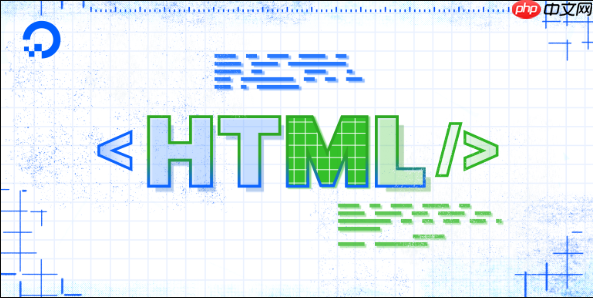
HTML中设置表单进度条主要依赖
<progress>
要实现一个表单进度条,核心是利用HTML5的
<progress>
value
max
我们设想一个简单的多步表单,或者一个需要用户填写多个字段的表单。我们可以这样来构建它:
首先是HTML结构:
立即学习“前端免费学习笔记(深入)”;
<div class="form-container">
<p>您的申请进度:</p>
<progress id="formProgress" value="0" max="100">0%</progress>
<form id="myForm">
<fieldset data-step="1">
<legend>基本信息</legend>
<label for="name">姓名:</label>
<input type="text" id="name" name="name" required>
<label for="email">邮箱:</label>
<input type="email" id="email" name="email" required>
<button type="button" onclick="nextStep(2)">下一步</button>
</fieldset>
<fieldset data-step="2" style="display:none;">
<legend>联系方式</legend>
<label for="phone">电话:</label>
<input type="tel" id="phone" name="phone" required>
<label for="address">地址:</label>
<input type="text" id="address" name="address" required>
<button type="button" onclick="prevStep(1)">上一步</button>
<button type="button" onclick="nextStep(3)">下一步</button>
</fieldset>
<fieldset data-step="3" style="display:none;">
<legend>确认信息</legend>
<p>请确认您的信息无误。</p>
<button type="button" onclick="prevStep(2)">上一步</button>
<button type="submit">提交</button>
</fieldset>
</form>
</div>接着是JavaScript逻辑。这里的思路是,每次用户完成一个步骤或填写一个关键字段,我们就更新
progress
value
document.addEventListener('DOMContentLoaded', () => {
const form = document.getElementById('myForm');
const progress = document.getElementById('formProgress');
const fieldsets = form.querySelectorAll('fieldset');
const totalSteps = fieldsets.length;
let currentStep = 1;
function updateProgress() {
const percentage = (currentStep / totalSteps) * 100;
progress.value = percentage;
progress.textContent = `${Math.round(percentage)}%`; // Fallback for older browsers
}
window.nextStep = function(step) {
if (step <= totalSteps) {
fieldsets[currentStep - 1].style.display = 'none';
fieldsets[step - 1].style.display = 'block';
currentStep = step;
updateProgress();
}
};
window.prevStep = function(step) {
if (step >= 1) {
fieldsets[currentStep - 1].style.display = 'none';
fieldsets[step - 1].style.display = 'block';
currentStep = step;
updateProgress();
}
};
// Initial update
updateProgress();
// Optional: Update progress based on individual field completion (more complex)
// form.addEventListener('input', () => {
// const filledFields = Array.from(form.querySelectorAll('input[required]')).filter(input => input.value.trim() !== '').length;
// const totalRequiredFields = form.querySelectorAll('input[required]').length;
// if (totalRequiredFields > 0) {
// const fieldPercentage = (filledFields / totalRequiredFields) * 100;
// // You might want to combine this with step progress or use it independently
// // progress.value = fieldPercentage;
// }
// });
});通过这种方式,用户就能清晰地看到自己离完成任务还有多远,这种视觉反馈在提升用户体验上是相当有效的。
动态更新表单进度条,说白了就是监听用户的行为,然后实时修改
<progress>
value
最常见的做法,也是我个人比较推荐的,是结合多步表单的步骤来更新。就像上面代码示例那样,每当用户点击“下一步”进入新阶段,我们就把
progress
value
如果你想做得更细致,比如在单个步骤内,根据用户填写的字段数量来更新进度,那就会稍微复杂一些。你需要给每个必填字段添加事件监听器(比如
input
change
progress.value
举个例子,假设你有一个步骤,里面有5个必填项。你可以监听这5个输入框的
input
// 假设在一个步骤内,根据字段填写情况更新进度
function updateStepProgress(fieldsetId) {
const fieldset = document.getElementById(fieldsetId);
if (!fieldset) return;
const inputs = fieldset.querySelectorAll('input[required], select[required], textarea[required]');
let filledCount = 0;
inputs.forEach(input => {
if (input.type === 'checkbox' || input.type === 'radio') {
if (input.checked) {
filledCount++;
}
} else if (input.value.trim() !== '') {
filledCount++;
}
});
const totalCount = inputs.length;
if (totalCount === 0) return; // Avoid division by zero
const stepPercentage = (filledCount / totalCount) * 100;
// 这里你可以把 stepPercentage 映射到整个表单的进度条上
// 例如:如果这个步骤占总进度的20%,那么当前步骤的进度就是 20% * (stepPercentage / 100)
console.log(`Step ${fieldsetId} progress: ${stepPercentage.toFixed(0)}%`);
// 你需要一个更复杂的逻辑来将这个局部进度反映到全局进度条上
}
// 示例:监听某个fieldset内的输入变化
// document.getElementById('myForm').addEventListener('input', (event) => {
// if (event.target.closest('[data-step="1"]')) {
// updateStepProgress('fieldsetIdForStep1'); // 假设你给fieldset加了ID
// }
// });progress
说实话,HTML
<progress>
首先,最基础的样式,比如宽度、高度、背景色、边框圆角,这些是直接作用在
progress
progress {
width: 100%; /* 让进度条占满父容器 */
height: 20px; /* 设置高度 */
background-color: #f0f0f0; /* 进度条的背景色,也就是未完成部分的颜色 */
border-radius: 10px; /* 圆角 */
border: none; /* 移除默认边框 */
overflow: hidden; /* 确保进度条内部的填充不会溢出圆角 */
}接下来是关键:控制进度条“已完成”部分的颜色和样式。这里需要用到不同的伪元素来兼容主流浏览器:
/* WebKit/Blink 浏览器 (Chrome, Safari, Edge) */
progress::-webkit-progress-bar {
background-color: #f0f0f0; /* 未完成部分的背景色,与progress本身的背景色保持一致 */
border-radius: 10px;
}
progress::-webkit-progress-value {
background-color: #4CAF50; /* 已完成部分的颜色,绿色 */
border-radius: 10px;
transition: width 0.5s ease-in-out; /* 添加平滑过渡效果 */
}
/* Firefox 浏览器 */
progress::-moz-progress-bar {
background-color: #4CAF50; /* Firefox的已完成部分直接设置在这个伪元素上 */
border-radius: 10px;
transition: width 0.5s ease-in-out;
}你可能注意到,Firefox的处理方式和WebKit系不一样。在Firefox里,
::-moz-progress-bar
progress
通过这些CSS,你可以把一个平平无奇的进度条变得赏心悦目,与整体UI风格融为一体。我个人觉得,一个设计精美的进度条,能无形中提升用户对整个产品的信任感和满意度,因为它传递出一种“我们很注重细节”的信号。
progress
在使用
<progress>
常见的误区:
<progress>
<progress>
max
value
max
max
max
value
max
max
<progress>
value
max
最佳实践:
progress.value
aria
aria-valuenow
aria-valuemin
aria-valuemax
<progress id="formProgress" value="50" max="100"
aria-valuenow="50" aria-valuemin="0" aria-valuemax="100"
aria-labelledby="progressLabel">
<span id="progressLabel">表单填写进度: 50%</span>
</progress>同时,在
<progress>
50%
<progress>
::-webkit-progress-value
::-moz-progress-bar
transition
记住,一个好的进度条,不仅仅是技术上的实现,更是用户体验设计中的一个重要组成部分。它能有效地传达信息,缓解用户等待时的焦虑,并提供积极的反馈,鼓励用户完成任务。
以上就是HTML如何设置表单进度条?progress标签的作用是什么?的详细内容,更多请关注php中文网其它相关文章!

HTML怎么学习?HTML怎么入门?HTML在哪学?HTML怎么学才快?不用担心,这里为大家提供了HTML速学教程(入门课程),有需要的小伙伴保存下载就能学习啦!

Copyright 2014-2025 https://www.php.cn/ All Rights Reserved | php.cn | 湘ICP备2023035733号